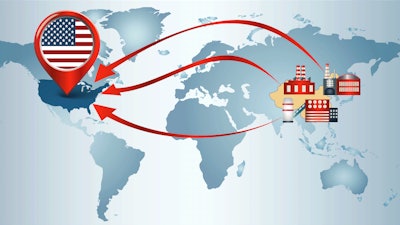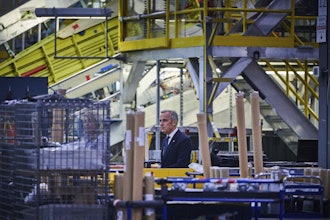
COVID-19 motivated companies everywhere to re-evaluate their supply chains. Though the pandemic was a black swan event by all measures, it revealed how our global supply networks can fail. We still have to contend with the pressures of same-day deliveries, complex product development, skyrocketing e-commerce demands, and more. There is little room for error today, and supply chain professionals have never been more aware.
Supply chain leaders are considering several courses of action in light of this reality. Some are expanding and diversifying production and manufacturing in hopes of minimizing their dependence on a small number of overseas suppliers. Others are relocating production and manufacturing operations to other parts of the world based on what transpired over the past two years. A third strategy that is gaining momentum is reshoring – companies are scaling down their geographic production and manufacturing footprints and bringing more activity back to within their borders.
The primary goal of reshoring is to regain control over the end-to-end supply chain. Companies are taking back some of what they’ve outsourced for decades in hopes of mitigating risk that is outside of their control.
However, reshoring is not a silver bullet for the problems we’re facing or will face going forward. Replacing foreign suppliers with domestic partners has some advantages, but the strategy doesn’t accomplish what companies really need – better supply chain resilience and agility – at least not without broader organizational transformation.
The Pros
Reshoring is an attractive solution for those who have struggled to handle recent disruption. By bringing suppliers closer to home, companies can reduce their exposure to outside risk. For instance, they can avoid economic or political issues affecting other nations. They can be more selective in who they partner with, choosing manufacturers with reliable supplier networks in the countries where they do business.
Reshoring also makes communicating with contract manufacturers and co-packers easier. Domestic suppliers operate in similar time zones, speak the same language, and offer shorter delivery timeframes. In addition, working with nearby suppliers reduces the environmental footprint associated with transporting goods to customers.
Overall, reshoring increases the potential for collaboration and control. Unlocking this potential is key to being successful with reshoring.
The Cons
Reshoring also has its downsides. Companies that reshore manufacturing tend to take on extra operational complexity. Those who want additional control over their partners and their partners’ partners have more people and processes to manage.
Furthermore, reshoring is not as cost-effective as outsourcing. Domestic suppliers can cost more, and companies often have to invest in new capabilities and infrastructure. In the process of reshoring, companies can lose access to specialization in certain niches or comparative advantages.
Perhaps most important, reshoring on its own doesn’t solve the challenges of operating in our fast-paced interconnected world. Consequently, organizations can go through the effort of reshoring without solving their underlying problems.
Making It Work
For reshoring to work, companies have to change how they fundamentally operate if they want to elevate their supply chains. What we need now is better visibility and transparency across the supply chain, as well as increased access to real-time data. These success factors break down functional silos and facilitate collaboration between all critical stakeholders.
In a world where disruption spreads quickly, supply chain professionals must be able to gather and disseminate information seamlessly. Operators have to move on from using spreadsheets, emails, phone calls, and PowerPoints to share updates. Only through modern digital solutions can we consolidate supply chain metrics and empower more people to make better decisions.
When various groups have access to a single source of truth, the walls between inventory management, supply planning, demand planning and day-to-day operations come down. More people can look into on-hand materials, capacity and existing orders, creating new opportunities to solve challenging problems and engage in concurrent planning. Rather than optimizing individual lanes, supply chain leaders can finally take a holistic and transparent view of supply chain performance.
Moreover, transparency into the supply chain gives operators the control they want as part of their reshoring efforts. They can see what’s happening in different lanes and have more context around supply chain results. With this information, they can help their partners make better decisions regarding how to source certain components or navigate material shortages.
The takeaway is that reshoring alone is not a long-term solution to building resilient and agile supply chains. Companies have to be able to act faster and minimize risk amidst all the noise in the global marketplace. Swapping overseas suppliers with domestic partners doesn’t accomplish this but getting everyone on a shared digital platform does.
Before pursuing a reshoring strategy, invest in a digital supply chain planning solution that solves the real challenges we face today. Only then are you truly prepared for the next era in supply chain management.






















